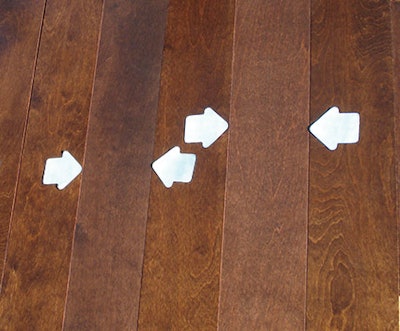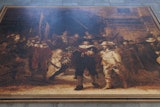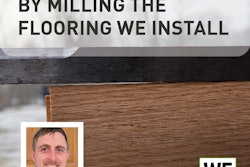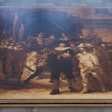

The Homeowner's Issue
The homeowners had a dark brown prefinished oak floor installed in their new lake home in Minnesota in September. In early March, they noticed some planks in one room had faded to a dull red color. Although the faded planks and the color difference were most noticeable in the areas where morning light poured through the windows, the fade did not affect every board.
Roy: The Inspector's Observations
The location of the faded planks seemed random. There weren't sections of faded planks in a row; rather, faded planks were interspersed throughout the floor. I asked for the order invoice and saw two different manufacturing run numbers. There were 11 leftover boxes of flooring (the homeowners had made a last-minute change to carpeting in one room), so I began comparing the color between runs. The colors matched. This confirmed the color was identical to the naked eye between the runs at the time of manufacture and installation. The room was well-lit with natural light, and the low winter sun and the lake outside meant the room's exposure to UV rays was exceptionally high. I concluded that, although the color appeared identical between the runs, the composition of the color in one of the runs was altered slightly during manufacturing. The altered color compositions must have had different levels of UV-sensitive dyes/stains, which caused that run to fade differently.
Blake: The Attorney's Analysis
Despite being the same product, different runs may incorporate different dyes. Manufacturers will from time to time make slight changes in their color formulas, such as adding more of one pigment to offset a red tone. This type of pigment variation is not detectable at the time of sale or installation and can pose a problem in homes with high sun exposure. The supplier, installer and homeowner are entitled to rely on the premise that all products labeled as the same color will match and weather similarly. In this case, the manufacturer likely did not employ adequate quality controls to ensure different runs would still match and weather similarly when exposed to sunlight, so liability would rest with the manufacturer. The extent of that liability will depend on the disclaimers in the manufacturer's warranty. The manufacturer likely disclaimed responsibility for the labor costs to remove and replace the defective materials, and also limited its liability to providing replacement products. If true, liability will depend on the wording of the contracts between the customer, supplier and installer. Pro tip: Stay with one run number!
RELATED: Limit Your Liability: Avoid Moisture-Related Claims on Wood Floors































